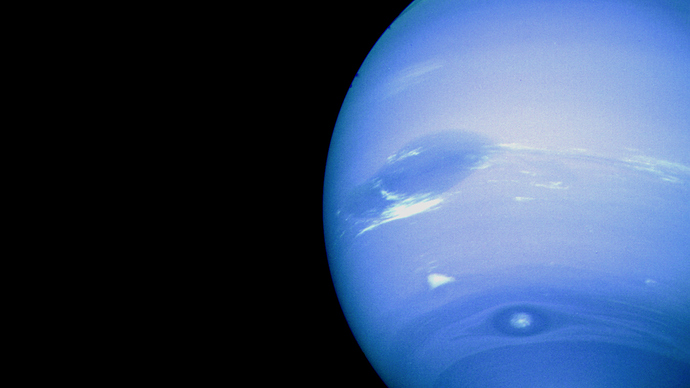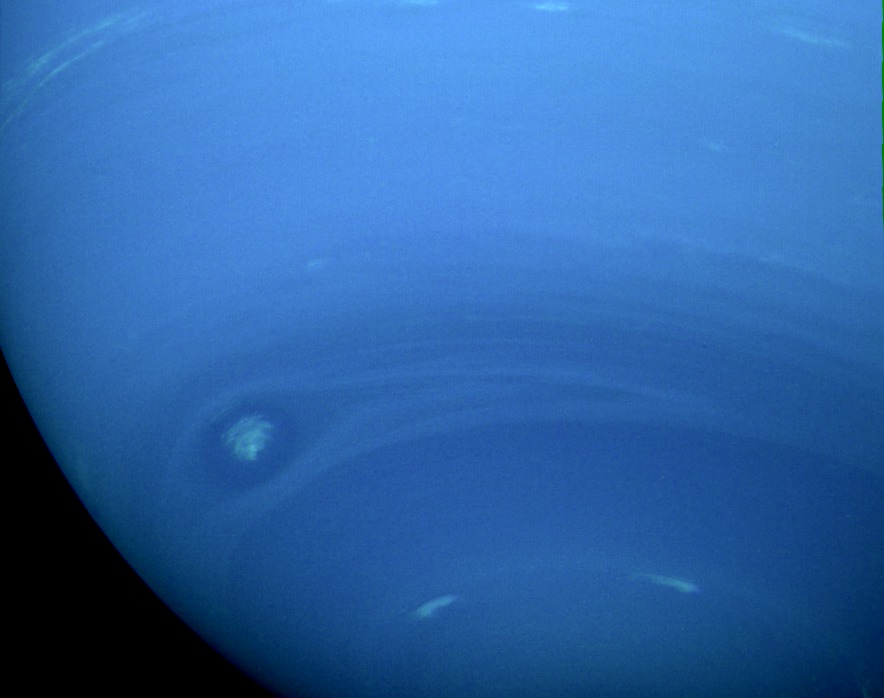List members , Neptune is 4.5 Billion Km from the Sun , yet it has mind-boggling wind speeds , 1.5 times the speed of sound !! Now , science has always taught us that the climate of planets is determined by the Sun . While this may hold good to an extent for the inner rocky worlds of our Solar system , but what about the far away gas giants ?
Isn't it weird that the outermost planet of our Solar system has the most turbulent wind systems ? Where does the energy for that come from ? The Sun is too far away from Neptune to cause it , then what else could fuel the energy for these monstrous winds ? There is only one viable answer - the Inner Sun of Neptune :))
https://svs.gsfc.nasa.gov/11349
Supersonic Wind
Story by Kayvon Sharghi Released on September 12, 2013
Share on facebook Share on twitter More Sharing Services3
Winds on Neptune travel faster than the speed of sound.
Neptune, the eighth and farthest planet from the sun, has the strongest winds in the solar system. At high altitudes speeds can exceed 1,100 mph. That is 1.5 times faster than the speed of sound. In 1989, NASA's Voyager 2 spacecraft made the first and only close-up observations of Neptune. Detailed images taken by the spacecraft revealed bright, white clouds and two colossal storms whipping around the planet's atmosphere. Neptune is a gas giant composed primarily of hydrogen and helium. Methane gas makes up only one or two percent of the atmosphere but absorbs longer wavelengths of sunlight in the red part of the spectrum, giving the planet its brilliant blue color. Watch the video to see a composite time-lapse assembled from Voyager 2 images of Neptune.
Neptune's winds move eastward and westward at different velocities.
Clouds on Neptune are made from methane ice crystals.
This Earth-size storm is called the "Great Dark Spot." Scientists now know such storms are impermanent features on Neptune.
Neptune’s southern hemisphere is seen here from a distance of 2.6 million miles.
Regards



